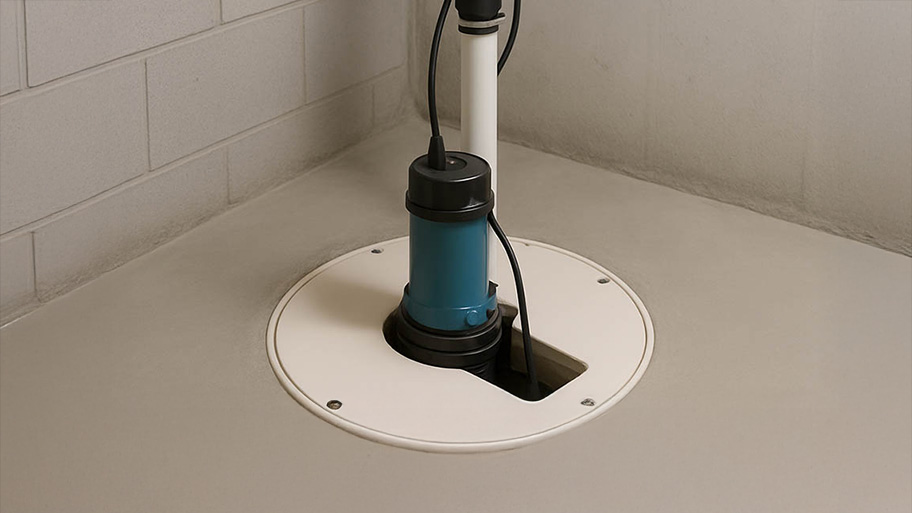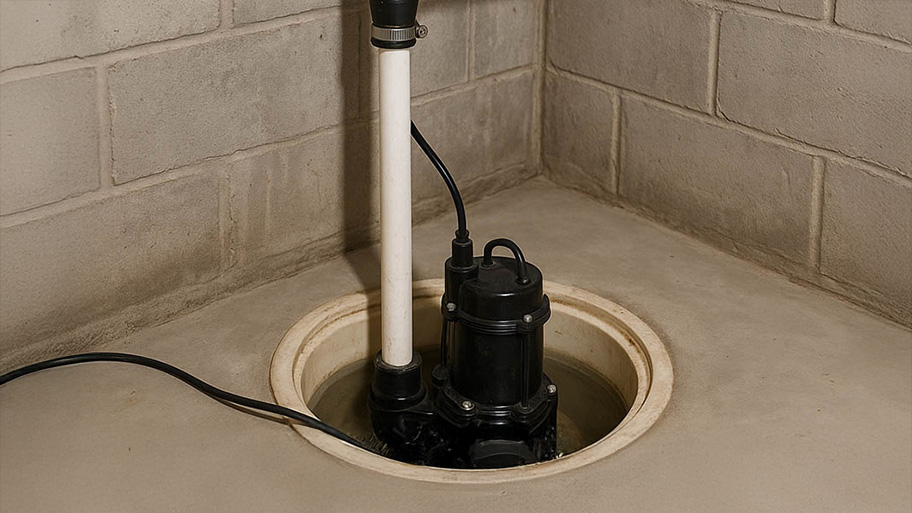
Discover how much sump pump installation costs, including average prices, key cost factors, and tips to save on your basement waterproofing project.
Drain away your sump pump blues


Is a clog jamming up your day? A clogged sump pump is often a one-way ticket toward a costly sump pump replacement, or worse, a flooded basement following a heavy rain storm. If you discover your sump pump is clogged, it’s best to get it cleared as soon as possible. Thankfully, this is a job you can easily do yourself without having to call in the professionals. Follow the steps in this guide to learn how to unclog a sump pump at home, and save a little money in the process.
Roll up your sleeves, pull on some rubber gloves, and get ready to unclog a sump pump in just a few steps.

Start by unplugging your sump pump’s electrical connection and detaching the pump’s discharge lines. Once it’s unplugged and the lines are detached, lift the pump from the sump basin.
To clean the sump pump, use a rag to wipe it down. If it’s really dirty, take it outside and hose it off with water. It’s a good idea to place the sump pump into a large bucket or inside a trash bag to collect any water drips and prevent a mess on the floor.
Use a flashlight to look inside the entry and exit of the drain discharge lines. In many instances, the reason why a sump pump is not working or draining is because of large pebbles and other debris getting lodged in the lines. This prevents water from entering and exiting the discharge lines from the sump pit. As part of your regular sump pump maintenance, it’s a good idea to check the entry and exit of your discharge lines to ensure they’re clear.
If you see a clog in the discharge lines or the sump pit and it’s accessible, you can use your rubber-gloved hands to scoop out the debris. However, clogs deeper in the line require a snake. Here’s how you can snake a clog from the discharge lines:
Push the snake into the lines until you feel resistance.
Begin to twist the snake clockwise and counterclockwise. This helps loosen the clog.
Slowly pull the snake out of the discharge line and remove any clogged debris from the snake.
Repeat until you no longer feel resistance when putting the snake into the lines.
When your sump pump brings in water from outside, it can also bring in dirt, sand, and other sediment, which builds up over time. Sometimes, the sediment will build up near the front of the discharge lines, which you can easily scoop out by hand or scrape out with a screwdriver.
But you might discover the blockage is further in the lines, making it not-so-easy to reach. In this case, you can use a wet/dry shop vac or a drain snake to help clear the clog. If you still have issues after several passes with a wet/dry vac or snake, the issue might be too severe to fix yourself, so call in a pro to help.
Once the discharge lines are free of clogs and blockages, test the sump pump to make sure it drains easily. Here’s how you can test the lines:
Fill a 5-gallon bucket or other large container with water.
Dump the water into the sump pit.
Turn on the sump pump.
Check that water is coming out of the discharge pipe.
If the water releases from the pipe, you’ve successfully cleared the clog.
If the water stays in the pit or drains slowly, there is still a clog in the sump pump system.

Once your drains are cleared, reattach the sump pump to the discharge lines and power source. Place the sump pump in the sump basin, making sure it’s centered and level. Plug the sump pump back in to turn it on.
Again, fill the sump pit with about five gallons of water to test that the pump works and is attached properly to the discharge lines. Once the pit is filled with water, it should activate the pump’s system to drain the water. If the sump pump is not working, you may have reinstalled it incorrectly or the discharge lines could still be blocked.
According to data from Angi, around 58% of homeowners want to repair their sump pumps within 1 to 2 days, and another 26% want the work done within 2 weeks, highlighting that most of these requests are emergencies or very urgent. Around 3% of homeowners were unsure or still in the planning and budgeting process, while only 3% could wait more than 2 weeks.
Unclogging your sump pump may seem like a messy, complicated job that’s best left to the professionals. But, if you possess some DIY plumbing know-how, you can easily unclog your sump pump yourself. Plus, the DIY costs are minimal, using tools and supplies you likely already have on hand.
However, some circumstances may require outside help from your local sump pump repair professional. For instance, your discharge lines might have blockages that are too far to reach and can’t be cleared with a drain snake or wet/dry shop vac. Or you may have trouble reinstalling your sump pump, or discover you need a new sump pump altogether. The average sump pump installation cost is $1,275 and ranges between $640 and $1,980 depending on labor and the type of pump you need.
From average costs to expert advice, get all the answers you need to get your job done.

Discover how much sump pump installation costs, including average prices, key cost factors, and tips to save on your basement waterproofing project.

Need to fix basement water problems or safeguard your home from damage in the future? Use this basement waterproofing cost guide to budget appropriately.

Sump pump replacement costs depend on the type of unit you have and the cost of labor, which varies by region. Read on to find out more about what to expect.

Your sump pump is designed to remove water and prevent flooding. Find out which common causes may be responsible if your sump pump is constantly running.

Even small floods can wreak havoc outside and inside your home. Learn what damage a flood can cause, how to prevent the worst of it, and what to do after flooding.

Unearth the root causes of water seepage in your basement floor. Explore effective solutions to keep your basement dry and your home protected.